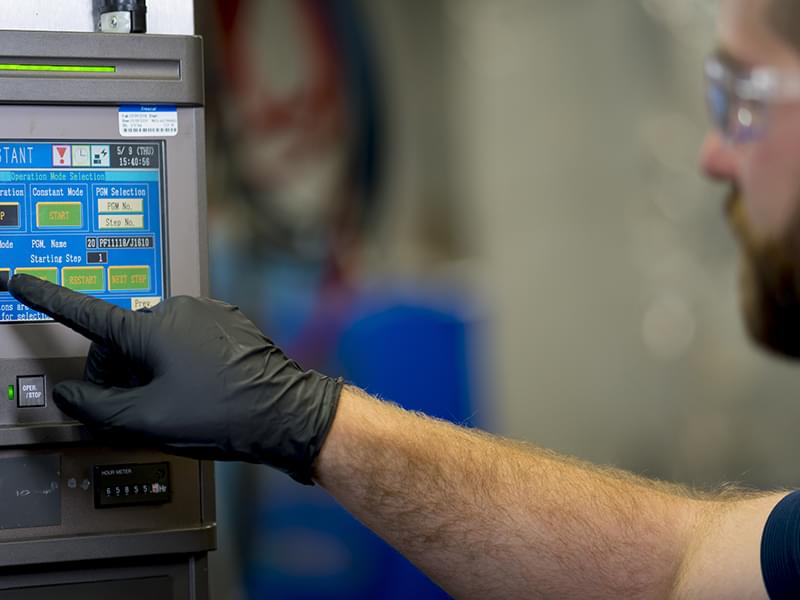General Motors Worldwide recently updated its GMW 16295 specification. In this Q&A, our experts Jeff Andrasik, Kenny McGinnis, and Kyle Goodrich share their input on how the changes will impact the industry and the testing process.
What is GMW 16295?
GMW 16295: Validation Test for Water/Coolant Joints is a General Motors Worldwide specification comprised of fourteen different tests to validate a
hose-to-fitting joint connection.
How has GMW 16295 changed recently?
An earlier version of GMW 16295 was comprised of fifteen different tests. In December of 2019, GM made the decision to combine two of the tests, the Coolant Circulation test and the
Pressure Temperature test, into a Pressure-Motion-Temperature test.
How is this new test different?
The original Coolant Circulation test from the earlier version of GMW 16295 required constant pressure and temperature during twenty hours of a twenty-four-hour cycle. During those twenty hours, one end of the coupon would move at a 3.33 Hz rate at a ± 10mm displacement. This test would be twenty days in length.
The original Pressure Temperature test from the earlier version of GMW 16295 was a much longer test. Depending on how quickly the temperature cycling testing was performed, this test could last five months! With motion not required, the Pressure Temperature test cycled temperature at seventeen-and-a-half hours per cycle (max) while pressure levels changed in the hose, depending on the temperature cycling segment.
The new combined test in the latest version of GMW 16295 has pressure impulse requirements at different pressure levels depending on the temperature cycling segment. The temperature cycling profile is similar to a classic PVT temperature cycling, with extreme maximum and minimum temperature levels for both ambient and coolant testing. The motion is a linear motion at 2 hz at ± 12.7mm displacement. The duration of one cycle is approximately sixteen hours. Depending on the number of samples being tested and the number of cycles required, the length of the test ranges from fourteen to twenty days.
From a technical perspective, the biggest difference is the
pressure requirements. The earlier versions of the test required slower pressure rise and drop rates. This new test requires an impulse cycle of 1 cycle per second (1 Hz), which is more aggressive and harder on the test samples. This could be a challenge for test equipment, depending on the size of the hose, the number of hoses required, and how much the hose expands.
From a practical perspective, the major difference is test duration. The previous tests could take up to five months. The new combined test takes only a few weeks.
Who is impacted by this change?
Any tier 1 or tier 2 suppliers looking to validate their water or coolant hose-to-fitting joins for future
automotive platforms will need to adopt this new test specification.
Internal and external testing labs will need to adapt by revising and upgrading test stands and equipment to accommodate the requirements of the new spec, especially the more intense pressure requirements.
Is there a PVT component to GMW 16295?
Yes, one of the fourteen tests listed in GMW 16295 is a pressure-
vibration-temperature (PVT) test. The test procedure can be found in GMW 14785.
How can Smithers help?
Our team has years of experience performing PVT testing for tier 1 and tier 2 suppliers and OEMs. We have worked closely with tier 1 suppliers to develop a strong understanding of the new requirements for GMW 16296. We already have adapted our equipment and constructed fixtures to meet this new test procedure, which means our laboratories are ready to conduct this testing procedure right away. Our customers can forego the start-up and on-boarding headache of modifying their own laboratories and work with us instead to keep their product development cycles moving efficiently.
To learn more, get in touch with Jeff Andrasik at jandrasik@smithers.com or 330-515-6715.

